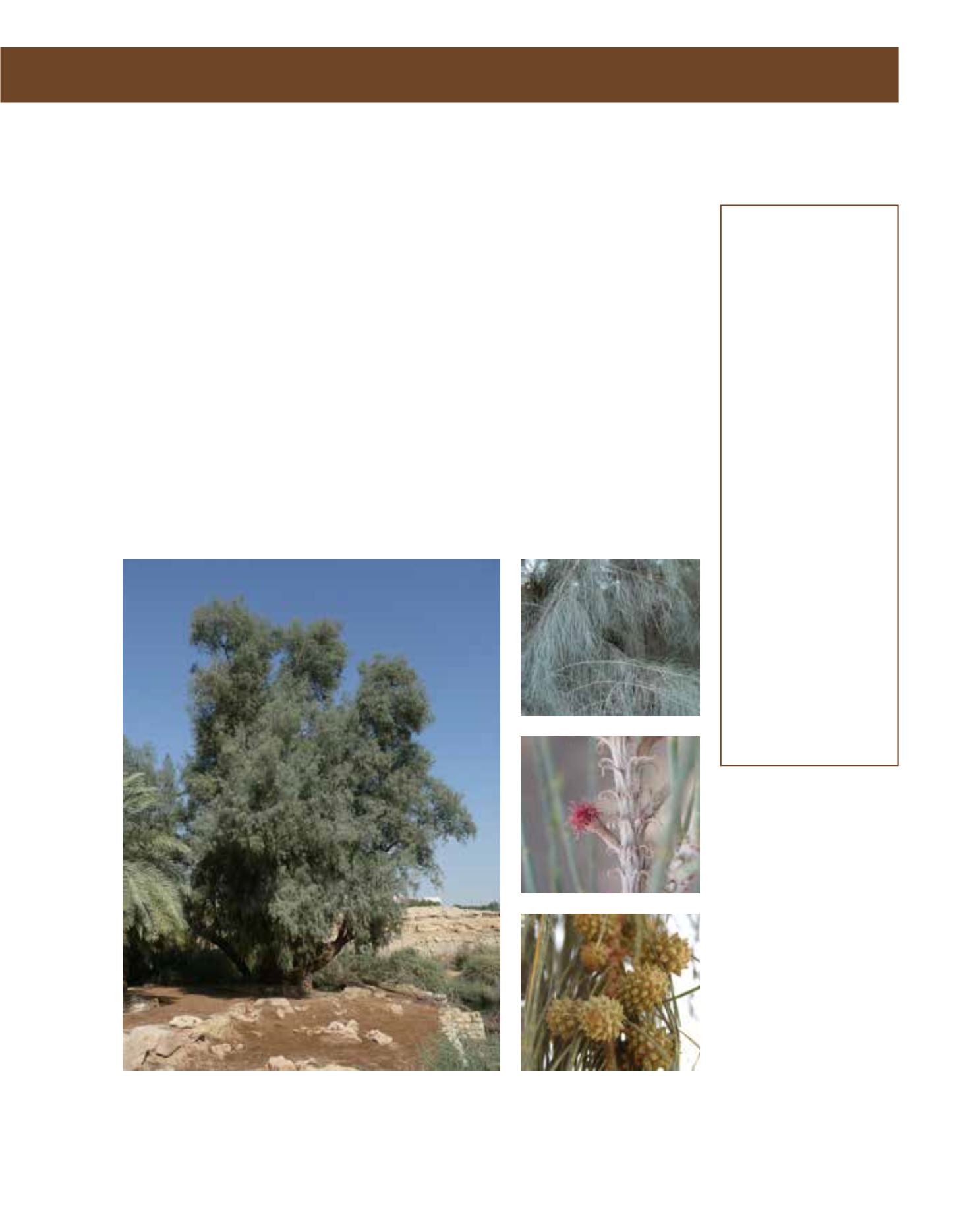

GENERAL
Origin
:
Mediterranean,
sub-tropical,
tropical
Vigour
:
fairly fast
growing
Humidity
:
very arid, semi-
arid, very humid,
extremely humid
Propagation :
sowing and
pricking out,
cuttings
Maintenance :
moderate
CONDITIONS
Urban climate :
resistant
Dessication :
resistant
Stagnant water :
resistant
Irrigation
:
low
Salinity/ppm :
very high (20000
ppm)
Hardiness
:
-3°C
SHAPE
Type
:
tree
Height
:
10 m-30 m
Spread
:
4 m-8 m
Foliage
:
evergreen
FLOWER
Colour
:
light green
Size
:
1.2 cm
Period
:
April - May
FRUIT
Type of fruit :
cones, nutlet
Fruit size
:
1.2 cm - 1.5 cm
The Horsetail Tree grows fast to about 15 metres high and 4 metres wide. In its homelands, ma-
ture trees reach up to 60 metres. It is native to northern Australia, Indonesia, Malaysia, the Phi-
lippines and New Zealand. Often seen in Arriyadh on farms, where it is planted as a windbreak, it
may be damaged by heavy frosts. Some people confuse the tree with Tamarix or athl.. In maturity,
the crown becomes flat, but mostly the trees retain their conical shape. The tree’s evergreen folia-
ge consists of pale-green needles, although it is not a conifer. The lower part of the straight trunk
is mostly branchless. The light-grey bark is smooth at first, but becomes rough over time. Male
and female inflorescences are usually borne on the same plant, but are inconspicuous. Pollination
is by wind. Winged nuts are released gradually when ripe and are also the common method of
propagation. Alternatively, cuttings are also used to propagate this tree. C. equisetifolia is tole-
rant of many soil types and both a high water table and several months of drought. Highly salt-
tolerant, it thrives in sand. It enhances soil fertility over time by increasing nitrogen and humus.
Its landscape values are stabilisation of slopes or banks, screens and windbreaks. For more elegant
landscapes, regular pruning is required to improve appearance. Pruning should also be done
frequently to remove old and dead branches. Severe cutting back is not tolerated. Leaf litter may
be a problem, and aggressive roots may restrict the growth of nearby plants.
90
Casuarina equisetifolia,
Casuarinaceae
Australian Pine,
Beefwood, Horsetail Tree, She-Oak
















